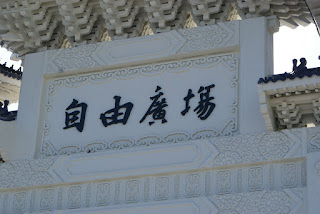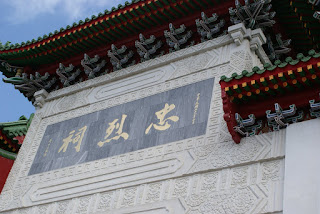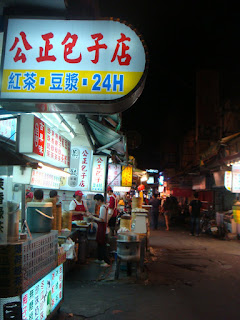




• Taipei 101 (Chinese: 台北101 / 臺北101), formerly known as the Taipei World Financial Center, is a landmark skyscraper located in Xinyi District, Taipei, Taiwan. The building ranked officially as the world's tallest from 2004 until the opening of the Burj Khalifa in Dubai in 2010. In July 2011, the building was awarded LEED Platinum certification, the highest award in the Leadership in Energy and Environmental Design (LEED) rating system and became the tallest LEED building in the world.[3] Taipei 101 was designed by C.Y. Lee & partners and constructed primarily by KTRT Joint Venture. The tower has served as an icon of modern Taiwan ever since its opening, and received the 2004 Emporis Skyscraper Award.[4] Fireworks launched from Taipei 101 feature prominently in international New Year's Eve broadcasts and the structure appears frequently in travel literature and international media.
• Taipei 101 comprises 101 floors above ground and 5 floors underground. The building was architecturally created as a symbol of the evolution of technology and Asian tradition (see Symbolism). Its postmodernist approach to style incorporates traditional design elements and gives them modern treatments. The tower is designed to withstand typhoons and earthquakes. A multi-level shopping mall adjoining the tower houses hundreds of fashionable stores, restaurants and clubs.
• Taipei 101 is owned by the Taipei Financial Center Corporation (TFCC) and managed by the International division of Urban Retail Properties Corporation based in Chicago. The name originally planned for the building, Taipei World Financial Center, until 2003, was derived from the name of the owner. The original name in Chinese was literally, Taipei International Financial Center (Chinese: 臺北國際金融中心).
Source:Wikipedia








The National Chiang Kai-shek Memorial Hall (traditional Chinese: 國立中正紀念堂; simplified Chinese: 国立中正纪念堂) is a famous monument and tourist attractions erected in memory of Generalissimo Chiang Kai-shek, former President of the Republic of China. It is located in Taipei, Republic of China (Taiwan).
The monument, surrounded by a park, stands at the east end of Memorial Hall Square. The structure is framed on the north and south by the National Theater and National Concert Hall. The entire plaza is located within sight of the Presidential Office Building.
Source: Wikipedia







Presidential Office Building.

Grand Hotel (Taipei)

The Martyrs' Shrine, resting on the slopes of the Qing Mountain and overseeing the Keelung River, is located right next to the Grand Hotel. It was built in 1969 and covers a large area. Its grand and magnificent architectural style is similar to that of the Taihe Dian Imperial Palace in Beijing, Mainland China, and symbolizes the martyrs' brave spirit.
More than 33, 000 square meters of grass fields surround the structure, and protected by the neighboring mountains it breathes a serene atmosphere which even more emphasizes its solemn and stately character. The 330,000 men who sacrificed their lives to the revolution before the establishment of the Republic of China and who fell during the Sino-Japanese war and the Chinese Civil war are worshipped here. Plates of these brave and loyal martyrs have been inserted into the four walls of the main building in testimony of their heroic deeds.
Each spring and autumn the president of Taiwan leads both civil and military officials in a public worship, while leaders from Taiwan's befriended countries come and pay floral tribute. Each year in October groups of overseas Chinese also come to visit the site.
Worth mentioning are the military police officers who guard the main gate, and who have been rigidly trained to stand like expressionless statues. Tourists alike are amazed at this display of composure and flock to see the ceremonial changing of the guards.








Night Market.
When one walks in the turning lanes and alleys, he (she) would often find something unexpected. The night market is packed with many people during holidays. We can often see families carrying many things from shopping and enjoying good meals. Their satisfaction is fully shown from their happy expressions.



















Vigor Kobo is a bakery shop that is close to spanking-new, established back in 1992, but its respect for tradition while at the same time bringing creativity to the pastry-snack game has quickly brought it renown and a constant flow of repeat business. Today it stands proud among the veritable forest of century shops in the area it inhabits, a respected and iconic representative of Taiwan’s baked-pastries tradition.
It stands near busy Baoan Temple and Confucius Temple, meaning a customer base of pilgrims and tourists from all over the island and even overseas. Early on, the owner decided to make the pineapple cake the focus of the Vigor brand; though almost all of Taiwan’s countless traditional-style bakeries sold these cakes, few made it their star attraction. The shop’s main focus was the overseas tourist, and the idea caught on. Today you’ll see tour buses rolling right up to the shop, travelers pouring out to do some serious gift and memento shopping.
The shop sells pretty much the entire range of traditional pastries, but perhaps most exotic and iconic are the “Tai Chi” pineapple cakes. The pastry shell is done as a two-tone yin-yang symbol, the dark side made by adding bamboo-charcoal powder, the other side the usual golden hue of the pineapple cake. Another popular item are the milk sun cakes (牛奶太陽餅); sun cakes are a favorite Taiwan invention, and here extra dairy-richness is used to create a creamier texture.












